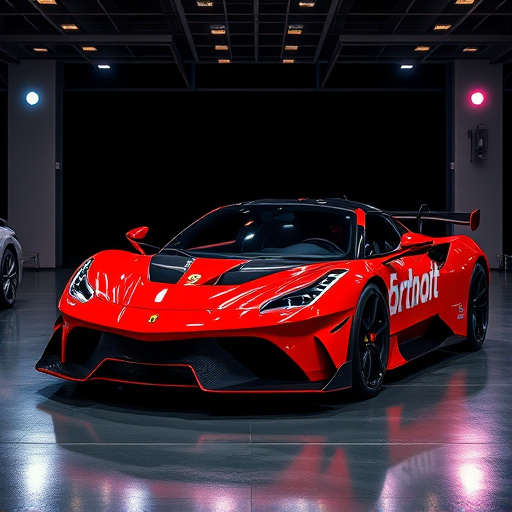The performance intake sound, a key aspect of automotive tuning, enhances driver engagement through synchronized engine power during acceleration. Its aggressive difference is shaped by intake design, including air filter boxes and tubes, allowing enthusiasts to differentiate between desired tones. This tailored sound not only appeals to drivers' senses but also highlights the engine's capabilities, fostering a unique connection while optimizing air ingestion for improved horsepower and torque.
Unleash the power of sound with an in-depth exploration of intake growl characteristics. This article delves into the captivating world where engine performance meets auditory sensations. We unravel the secrets behind aggressive intake sounds, offering a differentiated approach to understanding their role. Discover how intake design and sound manipulation can enhance your engine’s performance, highlighting the distinct impact on overall driving experience. Uncover the fascinating connection between performance and the unique difference in intake sounds.
- Understanding Intake Growl: The Role of Sound in Performance
- Decoding Aggressive Intake Sounds: A Differentiated Approach
- Enhancing Engine Performance through Intake Design and Sound Manipulation
Understanding Intake Growl: The Role of Sound in Performance

Intake growl, characterized by a deep, aggressive sound, is more than just a modifier to a vehicle’s noise—it plays a significant role in performance. This distinctive rumble enhances the driving experience by adding a tactile element that synchronizes with engine power, particularly during acceleration and high-revving conditions. The sound difference between a standard intake system and one with an aggressive growl can be striking, with the latter often designed to amplify specific frequencies for maximum impact.
This tailored approach to intake sound is especially appealing to car enthusiasts who seek a more engaging drive. An aggressive intake growl can make low-revving conditions more noticeable, encouraging drivers to explore the full potential of their engine’s power band. Moreover, it contributes to a sense of connection between the driver and machine, as the growl becomes a sort of language that communicates the engine’s mood and capabilities, enhancing overall performance.
Decoding Aggressive Intake Sounds: A Differentiated Approach

In the world of automotive tuning, the performance intake sound has become a sought-after characteristic, offering drivers a unique sensory experience. However, when it comes to aggressive intake sounds, not all growls are created equal. Decoding these sounds requires a differentiated approach to understand their distinct characteristics. The key lies in recognizing the subtle differences between various components and how they interact.
One of the primary factors influencing the intake sound is the design and material of the air filter box. Different materials and configurations can produce varying tones, from deep rumbles to sharp cracks. Additionally, the shape and length of the intake tube play a significant role in shaping the overall sound. A longer intake path can create a more pronounced resonance, while alternative routing may introduce unique turbulences, each contributing to the performance intake’s sonic signature. Understanding these nuances allows enthusiasts to differentiate between aggressive growls, ensuring they choose modifications that align with their desired listening experience.
Enhancing Engine Performance through Intake Design and Sound Manipulation

The design of a car’s intake system plays a pivotal role in enhancing engine performance, often overlooking the visual appeal and auditory impact it can have on the overall driving experience. Intake sound manipulation is an art that transforms the engine’s roar, creating a more aggressive and distinctive note. This involves carefully tailoring the intake’s shape, materials, and flow restrictions to optimize air ingestion, which directly contributes to increased horsepower and torque. By manipulating the air-fuel mixture, engineers can achieve a more efficient burn, resulting in improved performance.
Moreover, the aggressive sound that follows can be fine-tuned to offer a thrilling auditory experience for drivers. The right intake design enhances the natural sounds of the engine, creating a unique, deep growl that resonates with car enthusiasts. This manipulation not only satisfies the driver’s desire for a more responsive and powerful vehicle but also adds a layer of customization and personality to the driving experience, setting the car apart from its peers on the road.
Understanding and manipulating intake growl characteristics can significantly impact engine performance, offering a differentiated approach to enhancing power and efficiency. By decoding the aggressive intake sounds, engineers can tailor designs to create a unique auditory experience while optimizing fuel intake. This strategic manipulation not only contributes to better engine performance but also allows for a more personalized connection between driver and machine, highlighting the intricate relationship between sound, technology, and automotive excellence.














